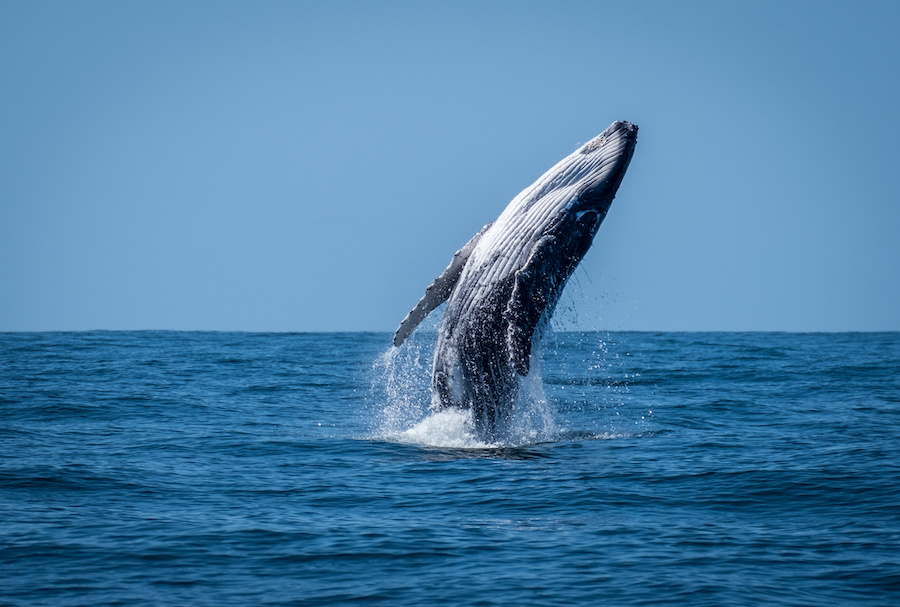
Did you know whale watching was possible at Sandbridge Beach? Every winter, humpback whales migrate up our coast and lately they've been arriving in record numbers. These massive creatures are so large you can't miss spotting them as they swim past — in fact, they can normally be clearly seen when you're standing on the beach. Humpbacks can grow to more than 50 feet long and weigh almost 80,000 pounds.Humpbacks are found in almost every ocean around the world, and they migrate up to 16,000 miles each year in search of food, mates, and breeding grounds. These mammals seek out cold water to eat, then move to give birth in the warmer waters of the Caribbean. The whales that you can see passing by Sandbridge Beach are North Atlantic humpbacks — and there are only about 800 of them in this previously endangered species.
When to See Whales
Whales move through Virginia's waters from December through March. When winters are mild, baitfish stay longer, attract more whales, and may even keep them hanging around a while. Humpbacks who are too young or old to mate tend to stop short of going all the way to the islands, so keep an eye out; you never know when you might spot a humpback hanging back.Where to See Whales
Though a boat trip increases your chance of seeing a humpback whale, occasionally these bus-size mammals are spotted right off the beach in no more than eight feet of water. Fishing boats have reported humpbacks threading between them while they were in sight of shore.On a recent whale-watching tour off of Sandbridge Beach, a whale came close enough to the tour boat that the spray from its blowhole soaked guests. In winters past, there were so many whales that the Navy reported they were jumping around like dolphins in the shipping lanes — even stopping a submarine in its tracks.Whale Safety
Humpbacks are known for being curious. They break the surface to check out boats and even roll over so an eye is out of the water. If you're kayaking, fishing, or walking the pier or the beach, you could see a whale up close and personal. Just remember: Federal law protects them. If you find yourself close to a whale, don't chase it or try to get closer. Legally, you have to stay 100 yards — or about the length of a football field — away from whales.Boat Trips
Whale-watching tours are offered by experienced staff who know about the animals you'll encounter. Most whales are identified by unique markings on their tails. Keeping track of them individually helps scientists learn more about their behavior. Data-collection experts are on board almost all whale-watching tour boats with binders full of photos to help you identify which whales you've seen.Most vessels are large and comfortable with bathrooms, a snack bar, a full bar, outdoor seating, and a heated indoor cabin, but ask for specifics when you book your whale-watching excursion. Boats are also physically accessible, so whale watchers in wheelchairs are welcome.
To maximize your chance of seeing whales, look for companies with guarantees. Local Virginia Beach operator Rudee Tours is located just 14 miles north of Sandbridge, and promises you'll see a whale if you take their trip between December and the end of February. No whales? You get to go again for free until you see one.







